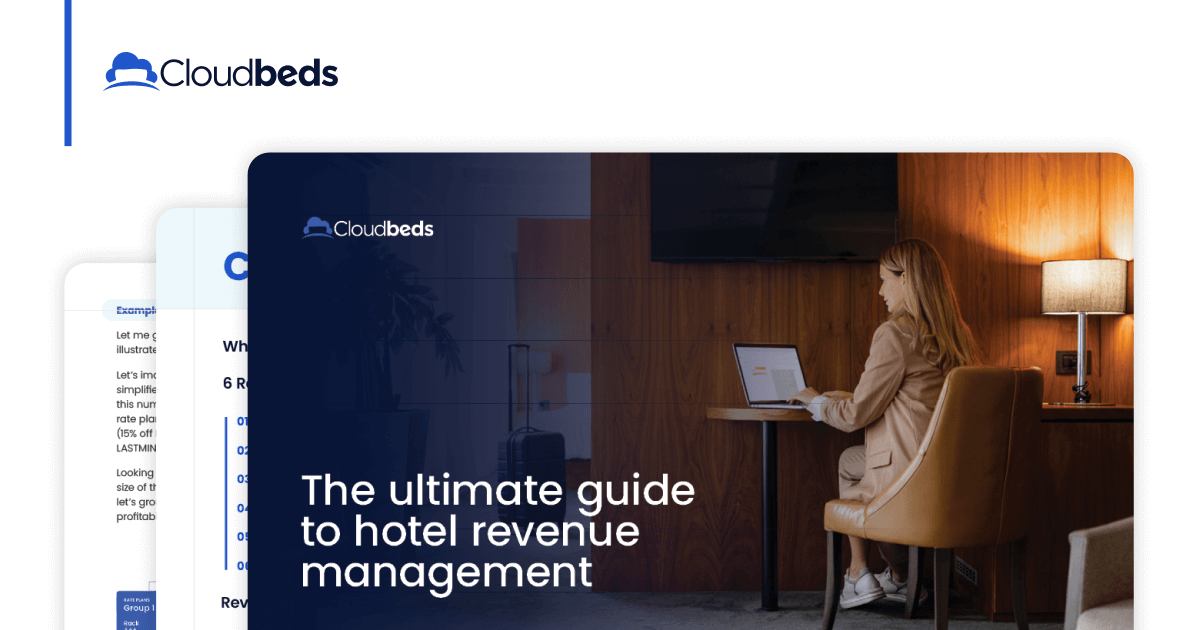
By Isis Darios
Every hotelier has asked the question, how can I strike a balance between controlling operating costs while upholding guest satisfaction?
Keeping hotel operating expenses under control is essential to running a successful property. High business expenses and wasteful practices can deplete profit margins and threaten a property’s financial health and long-term viability. On the flip side, passing on investments in the guest and employee experience can endanger performance and overall profitability.
In the ideal scenario, property expenses would be perfectly aligned with total revenue, leaving a tidy profit for hotel owners. However, finding the right balance between revenue and costs while upholding standards of quality and guest experience is not always that easy.
With the right know-how and tools in place, you can improve financial results while keeping guests happy, employees loyal, and positioning your property for long-term success. In this article, we look at the different types of operating costs and how you can reduce them (without impacting guest satisfaction).
What are hotel operating costs?
Hotel operating costs are the expenses associated with maintaining and running a property. In the hotel industry, they range from fixed costs like rent, property taxes, and insurance to variable costs like hourly wages, utility costs, and travel agent commissions.
Operating costs are managed by each department and consolidated in the hotel’s profit & loss statement (P&L). In the P&L, operating expenses are segmented by month and department and subtracted from topline revenue to give the hotel’s gross operating profit or GOP, a key measure of performance.
If the GOP is positive, the property is running at an operating profit. If the GOP is negative, the hotel is spending more money than it’s earning and needs to cut costs or boost revenue to improve the bottom line.
Types of hotel operating expenses
A hotel’s operating expenses can be divided into two types:
Fixed costs
Fixed costs generally remain the same regardless of how busy the property is, although they may change periodically. For example, a hotel pays the same rent and property taxes whether it’s running at 30% occupancy or 100% occupancy.
Examples of fixed costs in hotels include:
- Payroll-related expenses
- Rent or mortgage
- Property taxes
- Insurance
- Fixed monthly bills like cable and internet
- Franchise and management fees (if applicable)
- Technology (E.g., fixed monthly subscription fees)
Variable costs
Variable costs can fluctuate from day to day and are often correlated with occupancy levels. They are, therefore, harder to predict but easier to control, making them prime targets for cost-trimming. For example, the costs of hourly staff and cleaning supplies will be higher when a hotel is running at 100% occupancy than at 30% occupancy.
Examples of variable costs in hotels include:
- Hourly labor
- Utilities like gas, electricity, and water
- Marketing and distribution
- Housekeeping supplies
- Maintenance costs
- Food and beverage inventory
- Credit card commissions and other payment processing fees
- Technology (if fees are charged on a per-usage basis)
Note that some expenses, like labor costs and technology, can be both fixed and variable. For example, salaries are considered fixed expenses because they don’t vary significantly from month to month, whereas hourly wages are considered variable expenses because they can fluctuate relative to occupancy.
Important key performance indicators
To control costs, hotel management needs to know how much your property is spending, where the money is going, and why. Use the P&L statement to analyze each department and compare performance to the budget, forecast, and previous months and years. Look at metrics for patterns, outliers, and areas for improvement.
The following key performance indicators (KPIs) will help you understand how costs affect revenue and profitability. They can be measured by day, month, or year.
Cost per occupied room (CPOR)
Cost per occupied room, or CPOR, is a measure of the average cost of a hotel guest occupying a guestroom, including both fixed and variable costs. The lower the CPOR, the more potential profit a hotel can make on room sales. CPOR is calculated by dividing total room department costs by the total rooms sold in a given period.
CPOR = Total Rooms Costs/Total Rooms Sold
Cost per available room (CostPAR)
Cost per available room, or CostPAR, is similar to CPOR, except it measures the average cost of servicing all rooms on the property, not just occupied rooms. Whereas occupied rooms can fluctuate day by day, the number of available rooms is relatively fixed. CPAR is calculated by dividing total room department costs by the total number of available room nights in a given period.
CPAR = Total Rooms Costs/Total Available Room Nights
Gross operating profit per available room (GOPPAR)
Gross operating profit per available room, or GOPPAR, is a measure of average gross operating profit relative to the number of available rooms in a hotel. GOPPAR is calculated by dividing gross operating profit by the total number of available room nights in a given period.
GOPPAR = GOP/Total Available Room Nights
Labor per available room (LPAR)
Labor is one of the highest expenditures for hotels; the total labor cost per occupied room increased by over 26% between 2021 and 2022. Labor cost per available room, or LPAR, is a measure of a hotel’s labor expenses relative to the number of available rooms. LPAR is calculated by dividing total labor costs by the total rooms available in a given period.
LPAR = Total Labor/Total Available Room Nights
Guest acquisition costs (GAC)
Guest acquisition costs, or GAC, are the expenses used to generate bookings for a hotel. This includes agency commissions, transaction fees, and sales & marketing expenses. Generally, the lower the acquisition costs, the more profitable room sales are. To calculate GAC, divide total acquisition costs by the total room revenue in a given period and multiply by 100.
GAC = Total Acquisition Costs/Total Rooms Revenue x 100
6 ways to reduce hotel operating expenses
Now let’s imagine you have analyzed your P&L statement and found that operating costs have climbed too high across departments. While every property will take a different approach, here are some key areas to consider to streamline hotel operations and optimize costs.
1. Schedule smarter
Effective scheduling is the easiest way to manage labor costs. Staffing levels should be closely correlated to the flow of arrivals and departures. To do this, you’ll need to forecast using data from your PMS and revenue management system. For example, housekeeping staff should be scheduled based on expected daily occupancy and the average time needed to clean a room. For all departments, costs can be trimmed by sending staff home early or asking them to come in later when the hotel is quieter than anticipated.
2. Cross-train staff
The more versatile employees are at covering duties in other departments, the more flexibility you will have to shift resources where they are needed most. For example, at Bogentrakt, Co-founder Marco Leibundgut says, “We’ve shown some of our housekeeping staff how to use Cloudbeds so that I can have someone covering the front desk when there are breaks – it works really well. People understand the system really quickly. We show them how a check-in works, how to take a payment, and make a booking. We can cover different types of work for different staff members.”

3. Offer opt-in housekeeping services
In the hospitality industry, travelers have grown to expect opt-in housekeeping services, and many like the flexibility, but sometimes they need a little nudge. To increase cost-saving, at check-in or prior to arrival, ask guests if they prefer to have intermittent rather than daily housekeeping services. Not only will this save labor costs, but it will also reduce laundering costs and increase operational efficiency.
4. Reduce energy costs
Hotels in the U.S. spend about 6 percent of operating costs on energy each year, according to Energy Star, and costs have climbed even further recently. To reduce them, start with simple, affordable sustainability initiatives like LED light bulbs, staff education, and regular maintenance of HVAC systems. In the longer term, invest in occupancy sensors, smart thermostats, and energy-efficient HVAC systems.
5. Practice smart revenue management
Revenue management is about more than generating revenue, it’s also about controlling the costs of distribution and guest acquisition. Costs can vary significantly by channel, and a direct booking strategy will help reduce OTA commissions. By targeting repeat and long-stay guests, you can bring down marketing and labor costs. And by forecasting occupancy accurately, you can help reduce overstaffing and wastage.
6. Reassess your software stack
With technology proliferating in hotels, it’s easy to lose control of costs. To reduce labor expenses, utilize tools that automate simple, repetitive tasks like a booking engine, guest engagement platform, and a remote check-in solution. To reduce on-premise technology costs, switch to an integrated, cloud-based hospitality platform.
For example, Triple C Hotels & Resorts trimmed 60% of its hotel software budget and increased direct bookings by 12% by switching to a cloud-based property management system with an integrated pricing intelligence engine.
5 questions to ask when reducing hotel operating expenses
Finally, it’s important to consider how reducing expenses will affect quality, guest satisfaction, and employee satisfaction. If your efforts damage guest loyalty, staff turnover, or online reputation, the costs may exceed the benefits.
Before deciding whether or not to reduce costs, ask the following questions:
- What will the impact be on quality? Can we continue to maintain our quality standards?
- How will it affect our guests? Will we frustrate or inconvenience them?
- How will it impact our ability to maintain occupancy rates and meet revenue objectives?
- How will staff workloads and morale be affected? Will turnover increase?
- How can we roll out the changes in a way that staff and guests support them?
Ask for input from guests and monitor feedback closely in online reviews and surveys. Where possible, involve staff members in the process too. By sharing financial goals with staff and rewarding them for achievements, you will build a culture of fiscal responsibility across operating departments.
Being a stickler about costs isn’t always easy, but it will help you run a leaner, more profitable hotel business and will position you for success now and into the future.








